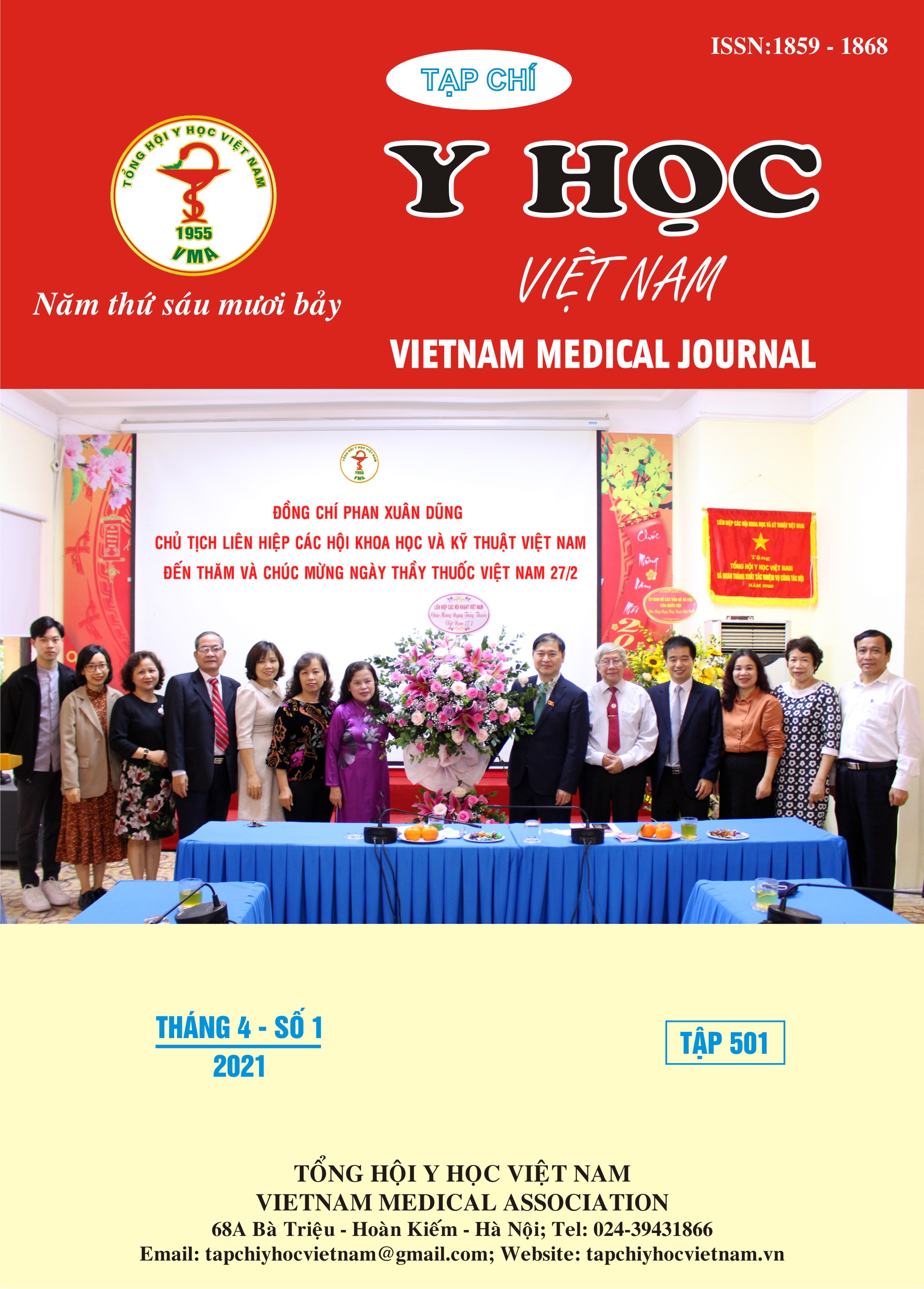EVALUATION OF THE EFFICACY OF PROPHYLACTIC TREATMENT OF PRETERM BIRTH IN PREGNANT WOMEN WITH A SHORT CERVIX WITH VAGINAL PROGESTERONE
Main Article Content
Abstract
Objective: To evaluate the efficacy of prophylactic treatment of preterm birth in pregnant women with a short cervix with vaginal progesterone. Subjects and research methods: A non-controlled intervention study involved 65 pregnanciesat 19 - 23 weeks and 6 days gestation at the National Hospital Obstetrics and Gynecology are determined by vaginal ultrasound to have a length of the cervix ≤ 25mm and met the inclusive and exclusive criteria . Pregnant women received prophylactic treatment with 1 tablet vaginal Utrogestan in the evening continuously from enrollment to the end of the 36-week pregnancy. Research results: the rate of preterm birth <28 weeks accounted for 6.1%; less than 34 weeks 12.3%, less than 35 weeks 16.9% and under 37 weeks 33.8%. The number of pregnant women who did not give birth prematurely (≥37 weeks) was: 66.2%. Postpartum status: 12.3% of children die, 87.7% of children live healthy; 81.5% of children were ≥ 2,500 grams and 18.5% were <2,500 grams. Conclusion: Progesterone prophylaxis for pregnant women with a short cervix is effective in reducing the rate of preterm birth.
Article Details
Keywords
preterm birth, cervical length, Progesterone
References
2. Romero R. Vaginal progesterone to reduce the rate of preterm birth and neonatal morbidity: a solution at last. Women's health (London, England). 2011;7(5):501-4.
3. Romero R, Nicolaides KH, Conde-Agudelo A, O'Brien JM, Cetingoz E, Da Fonseca E, et al. Vaginal progesterone decreases preterm birth ≤ 34 weeks of gestation in women with a singleton pregnancy and a short cervix: an updated meta-analysis including data from the OPPTIMUM study. Ultrasound in obstetrics & gynecology: the official journal of the International Society of Ultrasound in Obstetrics and Gynecology. 2016;48(3):308-17.
4. Hassan SS, Romero R, Vidyadhari D, Fusey S, Baxter JK, Khandelwal M, et al. Vaginal progesterone reduces the rate of preterm birth in women with a sonographic short cervix: a multicenter, randomized, double-blind, placebo-controlled trial. Ultrasound in obstetrics & gynecology : the official journal of the International Society of Ultrasound in Obstetrics and Gynecology. 2011;38(1):18-31.
5. Romero R, Conde-Agudelo A, El-Refaie W, Rode L, Brizot ML, Cetingoz E, et al. Vaginal progesterone decreases preterm birth and neonatal morbidity and mortality in women with a twin gestation and a short cervix: an updated meta-analysis of individual patient data. Ultrasound in obstetrics & gynecology: the official journal of the International Society of Ultrasound in Obstetrics and Gynecology. 2017;49(3):303-14.
6. Norman JE, Marlow N, Messow C-M, Shennan A, Bennett PR, Thornton S, et al. Vaginal progesterone prophylaxis for preterm birth (the OPPTIMUM study): a multicentre, randomised, double-blind trial. Lancet (London, England). 2016;387(10033):2106-16.
7. Fonseca EB, Celik E, Parra M, Singh M, Nicolaides KH. Progesterone and the risk of preterm birth among women with a short cervix. The New England journal of medicine. 2007;357(5):462-9.
8. O'Brien JM, Adair CD, Lewis DF, Hall DR, Defranco EA, Fusey S, et al. Progesterone vaginal gel for the reduction of recurrent preterm birth: primary results from a randomized, double-blind, placebo-controlled trial. Ultrasound in obstetrics & gynecology : the official journal of the International Society of Ultrasound in Obstetrics and Gynecology. 2007;30(5):687-96.
9. Rode L, Klein K, Nicolaides KH, Krampl-Bettelheim E, Tabor A. Prevention of preterm delivery in twin gestations (PREDICT): a multicenter, randomized, placebo-controlled trial on the effect of vaginal micronized progesterone. Ultrasound in obstetrics & gynecology : the official journal of the International Society of Ultrasound in Obstetrics and Gynecology. 2011;38(3):272-80.


